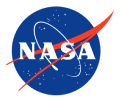Electric Machines
Electrified aircraft require motors and generators, also known as electric machines, to generate electrical power that drives fans and propulsors. These systems can open up new design possibilities for reducing fuel and energy use in the aviation industry.
Quick Facts
Overview
NASA’s research in the electrical power area focuses on building lightweight, high-efficiency motors and power converters in the megawatt (MW) class. MW-level components could help enable partially turboelectric and hybrid electric propulsion in aircraft up to the single-aisle class, transporting around 180 passengers per flight, and fully turboelectric or hybrid electric systems for smaller aircraft.
While specific power several times higher than industrial motors has been recognized as a key need for several years, the system benefits of combining high specific power with high efficiency have more recently become clear.
Advanced Power Technology
Measuring electricity, 1 MW is enough energy to power roughly 500-800 U.S. homes. Future single-aisle electrified aircraft will require between 3-20 MW of power – enough to supply a small township. NASA is sponsoring work to achieve power densities that are 2-3 times the state-of-the art and higher efficiencies for electric machines in the MW-class or larger.
The three major electric machine configurations that are currently being developed include permanent magnet, induction, and wound field. These each offer a different way of using electrical current to create a magnetic field that enables the motor to rotate, with varying levels of performance and efficiency. Permanent magnet motors tend to have higher efficiency with less torque and speed, while induction and wound field motors are often more cost-effective with better control torque control.
Electric Motor Development
High-Efficiency Megawatt Motor (HEMM)
Researchers at NASA are developing a 1.4 megawatt motor for future electrified aircraft.
NASA is investigating partially and fully superconducting motors for electrified aircraft. HEMM offers three times lower losses and weight than current aircraft motors and is being designed for a range of aircraft that require megawatt-levels of electrical power.
Learn More about High-Efficiency Megawatt Motor (HEMM)
Academic Collaborations
Materials Technology
Superconducting Wires
New materials research can help increase efficiency in future electrified aircraft systems.
NASA is collaborating with industry to advance research on superconducting wires for use in motors and generators on electrified aircraft. The materials used in superconducting wires eliminate electrical resistance when cooled below a critical temperature, which helps support higher current loads with minimal energy loss.
Learn More about Superconducting Wires


































